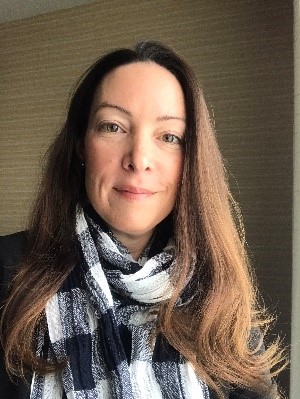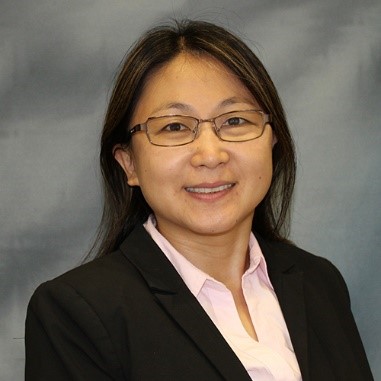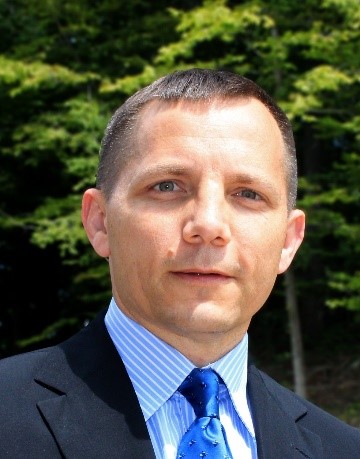AFRL partners with Florida State University to develop reinforced ceramics 3D printing of sensors
EGLIN AIR FORCE BASE, Fla.— The Air Force Research Laboratory recently partnered with Florida State University to develop reinforced ceramics 3D printing of sensors.
The technology of reinforced ceramics 3D printing of sensors uses a new liquid polymer in a 3D printer that can dispense pre-ceramic polymer, which is then pyrolyzed to form ceramic.
Dr. Amanda Schrand, of AFRL’s Munitions Directorate, and Dr. Cheryl Xu (then an Associate Professor at Florida State University, now located at North Carolina State University) have been collaborating since 2016. Their research focused on various materials solutions for high temperature sensors and diagnostics. The team consisted of many collaborators that were assessing the gaps in 3D printing technology. Ceramics printing came as a natural materials gap and also fit into their topic on survivability for defense environments.
“This is a great enhancement to the powder material used in 3D printing,” said Dr. Xu. “The liquid polymer lends itself to many different, more advanced uses. 3D printing of liquid polymer precursor allows for creation of complex shapes and honeycomb cellular architectures. Examples of interest include and are not limited to, propulsion or thermal protection systems, leading edges of hypersonic vehicles, lightweight mechanical metastructures, microelectromechanical systems, etc.”
“The most surprising aspect of the technology is that an inexpensive commercial off-the-shelf printer could be adapted for custom engineered materials printing,” added Dr. Schrand.
The Air Force Research Laboratory completed a Joint Ownership Exclusive License agreement with Florida State University. This agreement licensed Air Force commercial rights to FSU in return for a percentage of the royalties and allowed FSU to execute fully exclusive license agreements with interested parties. AFRL then worked with FSU and TechLink (a DOD Partnership Intermediary) to help market this technology that was eventually licensed to Todd Huber, CEO of Nahsai, LLC, a Service-Disabled Veteran-Owned small business.
Nahsai contacted Techlink, who facilitated discussions with inventors and AFRL technology transfer offices. In the case of this patent, it is jointly held by FSU, so Nahsai engaged with both organizations for exclusive licensing rights.
“This technology enables us to additively manufacture [3D print] ceramic composites with nano-scale fillers like carbon nanotubes and does so in a way that preserves many of the key property tailoring advantages of ceramics that come from polymers, said Huber. “The technology leverages professional grade 3D printers but modifies them with open source tools and a few unique parts that can be custom printed with the printer itself. A key aspect is also use of high intensity ultraviolet light to cure the material as the system forms each layer of a product.”
“The most surprising aspect of the technology has been the bridge it forms to other leading technologies,” Huber stated. “For example, the ability to consistently form very small and precise features with a family of compatible ceramic materials, enables us to now explore a number of metamaterial designs that could solve real challenges in extreme environment sensing.”
Nahsai is now in a position to offer a broad spectrum of material solutions with an emphasis on pace. They understand commercial and defense customers are increasingly challenged to meet schedule expectations. Additive manufacturing opens up opportunities to capture the value of the materials, but with custom solutions to form and deliver in extremely short timelines. The materials used at Nahsai can survive over 3,000 degrees and 40,000psi with the ability to tailor their thermal, electrical, and mechanical properties. They can form everything from flexible thermal seals to conformal antenna or embedded wireless pressure sensors. Nahsai is working to help solve target applications in ultra-efficient energy, high performance mobility, and hypersonic sensing. Nahsai is still testing the limits of what can be done with this new product and is excited by the opportunities it represents.

Dr. Amanda Schrand, of AFRL’s Munitions Directorate, and Dr. Cheryl Xu (then an Associate Professor at Florida State University, now located at North Carolina State University) have been collaborating since 2016. Their research focused on various materials solutions for high temperature sensors and diagnostics. The team consisted of many collaborators that were assessing the gaps in 3D printing technology. Ceramics printing came as a natural materials gap and also fit into their topic on survivability for defense environments. (Courtesy photo)

Dr. Cheryl Xu, a researcher at the time of the technology creation, was an Associate Professor at Florida State University, now located at North Carolina State University. (Courtesy photo)

Todd Huber is the Chief Executive Officer of Nahsai, LLC, a Service-Disabled Veteran-Owned small business. (Courtesy photo)
